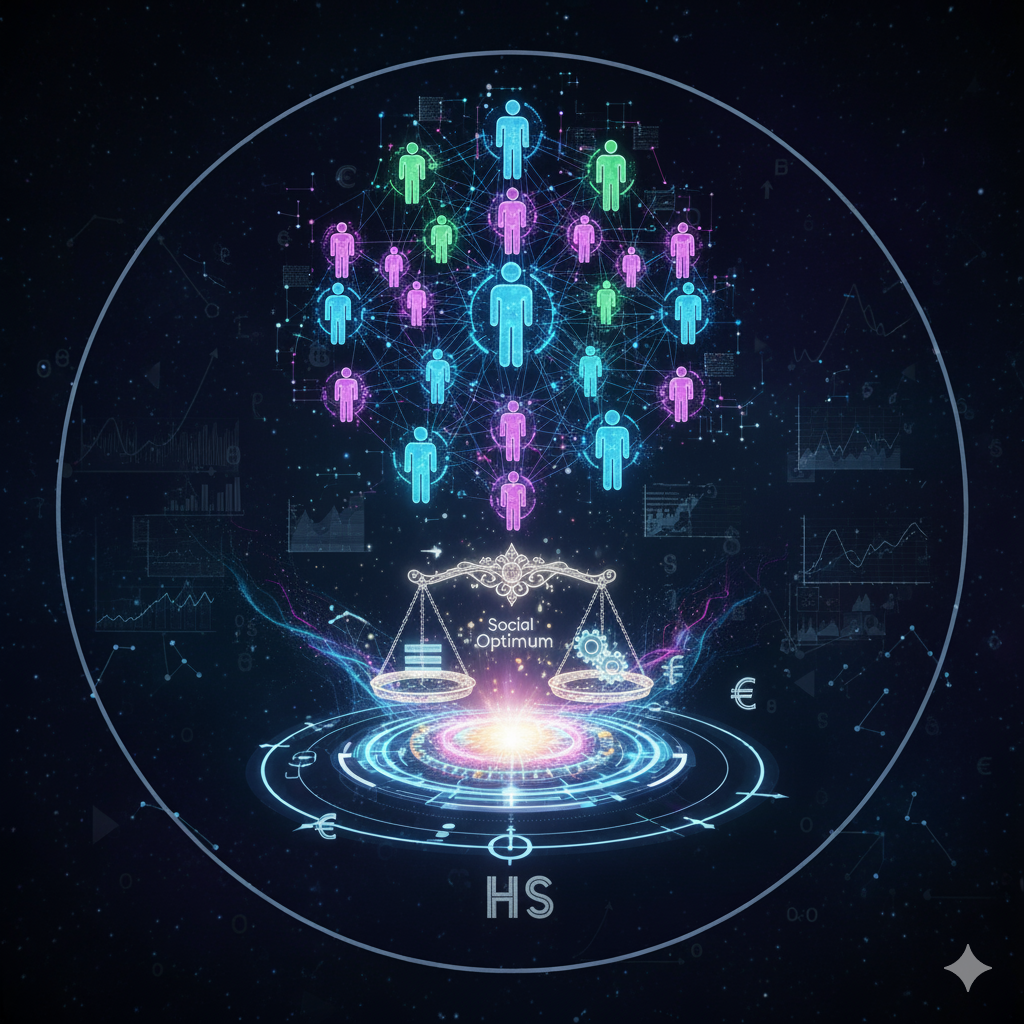Introduction
Interest has always been one of the most debated and fascinating concepts in economics and finance. It plays a crucial role in determining how individuals, firms, and governments make decisions regarding saving, borrowing, and investment. The statement “interest is the reward for relinquishing liquidity and is determined by the demand and supply of money” is rooted in the Keynesian theory of interest, which focuses on the role of money, liquidity preference, and the monetary system in shaping the rate of interest.
To understand this concept thoroughly, it is essential to explore the meaning of interest, liquidity preference, money demand and supply mechanisms, and how these interact to determine the equilibrium rate of interest in an economy.
Meaning and Nature of Interest
Interest can be defined as the payment made for the use of money or capital over a period of time. It is often expressed as a percentage of the principal amount. From an economic point of view, interest is the price of money — just as wages are the price for labor and rent is the price for land.
In simple terms, when a person lends money, they forego the present use of that money. The interest they receive acts as a reward for parting with liquidity — that is, for giving up the immediate control and use of cash.
Key Points about Interest:
- Reward for Abstinence: Interest compensates the lender for deferring current consumption.
- Cost of Borrowing: For the borrower, interest represents the cost of using money for productive or consumption purposes.
- Price of Money: Like other prices in the economy, interest is determined by the interaction of demand and supply — but here the focus is on the demand and supply of money, not goods.
- Monetary Phenomenon: Interest rates are closely related to the monetary policy of the government and the liquidity conditions in the financial system.
The Concept of Liquidity and Liquidity Preference
Before exploring how interest serves as a reward for relinquishing liquidity, it is important to understand what liquidity means.
Liquidity refers to the ease with which an asset can be converted into cash without loss of value. Money is considered the most liquid asset, as it can be used directly to purchase goods and services or settle debts.
However, when people choose to lend or invest money, they give up this liquidity. They cannot immediately use that money for their needs until it is returned. Hence, they must be compensated for this sacrifice, and that compensation takes the form of interest.
Liquidity Preference Theory
The Liquidity Preference Theory, proposed by John Maynard Keynes in his famous work “The General Theory of Employment, Interest, and Money” (1936), explains the determination of interest rates in terms of people’s preference for holding cash (liquidity) versus investing it.
According to Keynes, individuals prefer liquidity for three main motives:
- Transactions Motive:
People hold money to carry out their day-to-day transactions. The demand for money under this motive depends on income levels and business activity. - Precautionary Motive:
People also keep cash to meet unexpected expenses or emergencies. The higher the uncertainty in the economy, the greater the precautionary demand for money. - Speculative Motive:
This refers to holding cash to take advantage of future changes in bond prices or interest rates. When people expect bond prices to fall (and interest rates to rise), they prefer holding cash, and vice versa.
Thus, liquidity preference represents the demand for money for these three motives.
Interest as a Reward for Relinquishing Liquidity

When an individual lends money or invests in a non-liquid asset (like bonds or deposits), they surrender liquidity — meaning they lose the ability to spend that money immediately.
In return for this sacrifice, they receive interest. Therefore, interest acts as a reward for parting with liquidity.
In this view, the rate of interest is not determined by productivity of capital (as classical economists argued), but rather by people’s desire to hold money and the availability of money in the economy.
Example:
Suppose a person has ₹10,000 in cash. If they keep it, they maintain full liquidity but earn no return. If they lend it to someone or invest it in a bond, they give up liquidity but earn interest — say, 6% per annum.
This interest is the reward for not holding liquid cash.
Classical Theory vs. Keynesian Theory of Interest
To appreciate the Keynesian statement fully, it is helpful to compare it with the classical theory of interest, which had a very different perspective.
Classical Theory (Real Theory of Interest):
- According to classical economists like Marshall and Pigou, interest is determined by savings and investment.
- It is the reward for waiting or postponing consumption.
- Savings (supply of capital) and investment (demand for capital) determine the equilibrium interest rate.
However, Keynes criticized this view for ignoring the role of money and liquidity. He argued that people do not always save for investment purposes — they often prefer to hold money for security or speculation.
Keynesian (Monetary) Theory of Interest:
- Interest is the reward for parting with liquidity, not for saving or waiting.
- It is determined by liquidity preference (demand for money) and money supply.
- The rate of interest balances the desire to hold cash with the quantity of money available.
Demand for Money (Liquidity Preference)
The demand for money arises because individuals and businesses need to hold money for transactions, precautionary, and speculative reasons. Keynes categorized this into two parts:
- Active Balances (Transactions and Precautionary Motives):
- Depend on the level of income and business activity.
- Represented as L1=f(Y)L_1 = f(Y)L1=f(Y), where L1L_1L1 is demand for active balances and YYY is income.
- Idle Balances (Speculative Motive):
- Depend on the rate of interest.
- Represented as L2=f(r)L_2 = f(r)L2=f(r), where L2L_2L2 is speculative demand and rrr is the interest rate.
Hence, the total demand for money is: L=L1+L2=f(Y)+f(r)L = L_1 + L_2 = f(Y) + f(r)L=L1+L2=f(Y)+f(r)
As the rate of interest falls, people expect bond prices to fall and prefer holding cash, increasing liquidity preference. Conversely, when interest rates rise, people hold fewer idle balances and invest more.
Supply of Money
The supply of money refers to the total amount of money available in the economy at a given time. This includes currency held by the public and demand deposits in banks.
In Keynesian analysis, the supply of money is fixed by the monetary authorities (like the central bank) at a particular time and is represented as a vertical line in the money market diagram.
Thus, the money supply is independent of the rate of interest, whereas money demand varies inversely with it.
Determination of the Rate of Interest
The equilibrium rate of interest is determined by the intersection of money demand (liquidity preference) and money supply.
Mechanism:
- When the rate of interest is above equilibrium, the supply of money exceeds demand. People buy bonds with excess cash, pushing bond prices up and reducing interest rates.
- When the rate of interest is below equilibrium, the demand for money exceeds supply. People sell bonds to get cash, lowering bond prices and raising interest rates.
- Thus, equilibrium is achieved at the point where: Money Demand=Money SupplyMoney\ Demand = Money\ SupplyMoney Demand=Money Supply
Graphical Explanation:
- The Liquidity Preference Curve (LP) slopes downward, showing an inverse relationship between interest rate and demand for money.
- The Money Supply Curve (MS) is vertical.
- The intersection determines the equilibrium rate of interest.
Role of Central Bank and Monetary Policy
The central bank (e.g., Reserve Bank of India) plays a crucial role in influencing the rate of interest by controlling the money supply.
Through instruments like:
- Open Market Operations
- Cash Reserve Ratio (CRR)
- Repo and Reverse Repo Rates
- Monetary Policy announcements
The central bank can increase or decrease liquidity in the system, thereby influencing interest rates.
For example:
- If the central bank increases money supply, the MS curve shifts rightward, reducing interest rates.
- If it reduces money supply, interest rates rise.
This mechanism helps in stabilizing inflation, stimulating investment, or controlling excessive growth, depending on economic conditions.
Interest Rate and Economic Activity
Interest rates have a profound impact on various sectors of the economy:
- Investment:
Lower interest rates make borrowing cheaper, encouraging investment and production.
Higher rates discourage borrowing and slow down economic activity. - Consumption:
Interest affects consumer credit — car loans, housing loans, and personal loans.
Low rates stimulate demand, while high rates reduce consumption. - Savings:
Higher interest rates encourage saving, while lower rates push people toward spending or investing in riskier assets. - Inflation:
Low interest rates can cause inflationary pressures by increasing money circulation.
High rates can curb inflation by reducing spending. - Foreign Exchange:
Interest rate differentials affect capital flows and exchange rates. Higher domestic rates attract foreign investment, strengthening the currency.
Thus, interest acts as a key monetary instrument connecting money, investment, income, and economic stability.
Criticisms of Keynesian Theory
While Keynes’ liquidity preference theory is influential, it has also faced several criticisms:
- Neglect of Real Factors:
Critics argue that Keynes focused too much on monetary aspects and ignored real economic factors like productivity and savings. - Short-Run Analysis:
The theory primarily applies to the short run. In the long run, interest rates are influenced by real forces like capital accumulation and growth. - Assumption of Constant Money Supply:
In reality, money supply is not fixed and changes with credit creation by banks. - Neglect of Other Financial Assets:
Keynes assumed that people hold only money and bonds, ignoring other assets like equities, real estate, and gold. - Indeterminate Nature:
Since income affects money demand and interest affects investment (which affects income), critics argue that Keynes’ theory may lead to circular reasoning.
Despite these limitations, the liquidity preference theory remains a cornerstone of modern monetary economics and policy formulation.
Modern Interpretations and Extensions
Modern economists have extended Keynes’ ideas to include broader frameworks of portfolio theory and monetary equilibrium.
- Portfolio Balance Approach:
People hold various assets — money, bonds, shares, etc. — and interest rates balance their portfolios. - IS-LM Model:
Developed by Hicks and Hansen, it integrates the goods market (IS curve) and money market (LM curve) to determine equilibrium interest and income levels. - Monetarist View (Milton Friedman):
Friedman viewed money demand as a function of several variables, including wealth and expected returns on different assets.
He emphasized that interest rates are influenced by the growth of money supply and inflation expectations. - Post-Keynesian View:
Post-Keynesians stress that interest rates are policy-determined and not purely market-driven, emphasizing the role of central banks and institutional structures.
Interest and Financial Market Stability
Interest rates also affect the stability of the financial system. When interest rates are too low for too long, they can encourage excessive borrowing and speculation, leading to bubbles. Conversely, very high rates can trigger defaults and slow down growth.
A balanced interest rate helps maintain:
- Financial discipline
- Sustainable credit growth
- Balanced investment decisions
In developing countries like India, interest rates are carefully monitored to ensure both growth and price stability.

Future Aspects of Interest Rate Dynamics
With globalization and technological advances, the nature of money and liquidity has evolved. The rise of digital currencies, cryptocurrencies, and fintech platforms is changing the way interest rates operate in financial systems.
Future Trends:
- Digital Money and Central Bank Digital Currencies (CBDCs):
These may alter traditional liquidity concepts by making transactions instantaneous. - Global Integration:
International capital movements now influence domestic interest rates. - AI and Predictive Analytics:
Artificial intelligence helps forecast liquidity conditions and adjust policy rates dynamically. - Negative Interest Rates:
In some economies (like Japan and the Eurozone), interest rates have turned negative, challenging traditional theories of liquidity preference. - Green Finance and Sustainable Investments:
Interest rates are being linked to environmental performance and sustainability goals.
Thus, the concept of interest as a “reward for relinquishing liquidity” continues to evolve with financial innovations.
Conclusion
To conclude, interest represents the price paid for using money and serves as a reward for parting with liquidity. According to Keynes, the rate of interest is not determined by saving and investment, but by the interaction between liquidity preference (demand for money) and the supply of money.
This theory highlights the monetary nature of interest and emphasizes the importance of liquidity in financial decision-making. While it has limitations, it provides a more realistic understanding of how interest rates are shaped in modern economies.
In essence, when individuals or institutions give up liquidity — their ability to hold and use money freely — they expect compensation in the form of interest. This delicate balance between money demand and money supply ultimately determines the rate of interest, influencing the entire structure of economic activity, investment, and growth.
Key Takeaways
- Interest is the price of money and the reward for giving up liquidity.
- Liquidity Preference explains why people hold money and how their behavior influences interest rates.
- Money Demand and Supply determine the equilibrium interest rate in the economy.
- Central Bank policies play a vital role in adjusting liquidity and stabilizing interest rates.
- Despite criticisms, the Keynesian theory remains a fundamental framework for understanding monetary economics.




